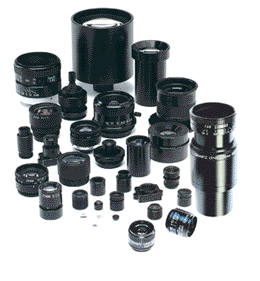High resolution lenses for machine vision — standard and custom lens design
The Science Behind Anti-Vibration Camera Lenses
High Resolution Lenses for machine vision, instrumentation, inspection and vibration-sensitive applications. Standard and custom hi-res lens assemblies.

Camera Lenses
Cameras are sometimes asked to perform in less than ideal conditions and on rugged terrain. When cameras are asked to capture images in situations in which vibration could be a factor in taking a clear photo, the need for vibration-free, anti-vibration and image stabilization technologies need to be put into place. These technologies help reduce the amount of blur on an image caused by movement of the camera. To address this, camera manufacturers have been incorporating vibration reduction technologies into cameras.
If a photographer is holding a camera in a less than ideal stable position and is using slow shutter speeds or long lenses, he is likely to cause the camera to shake, which emits vibrations that can interfere with the quality of the image captured. The vibrations, even slight ones, lead to movements within the camera’s image sensors and can result in blurry images. Blurring on an image is more noticeable the larger the magnification of the final image.
The ways that camera manufacturers address vibration vary between manufacturers and camera models. In some cameras, there is in-camera technology that can correct blur to make it less noticeable in larger images, but does not provide a blur-free image. Some photographers prefer to use a technology that incorporates vibration reduction right into the lens itself so the photographer is aware at the time of the shoot if he is obtaining a clear image or if adjusting the settings will address any potential blur through the use of spot metering.
A vibration reduction lens typically has two sensors built in that can detect both “pitch and yaw,” voice control motors and the vibration reduction lens unit. At the time the photographer presses the shutter release to the halfway point, the sensors in the lens will detect the amount of horizontal and vertical movement and begin to make adjustments. The data on the horizontal and vertical movements are then sent to a voice control motor, which then compiles the data and uses it to stabilize the image the photographer is seeing in the viewfinder. At the time the photographer completely depresses the shutter button, the sensors go to work detecting the final pitch and yaw information, send the information to the voice coil motors and it then positions the element in the vibration reduction lens for a final time, allowing the photographer to not only see, but capture the best possible image.
The benefits of vibration reduction lenses and vibration sensor technologies are myriad for the photographer. The technologies allow the photographer to better able use auto focus to gain photo clarity. Additionally, being able to see the image more clearly during the focusing process lets the photographer check the composition details before taking the final photograph.